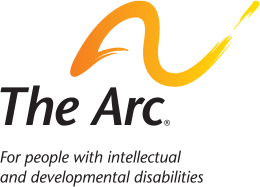Civitan International & The Arc Announce New Partnership to Advance Opportunities for People With Disabilities
BIRMINGHAM, AL & WASHINGTON, DC – May 27, 2025 – Civitan International and The Arc announced today a strategic partnership to increase awareness and understanding of the challenges faced by people with intellectual and developmental disabilities (IDD) and their families, and to connect those families to volunteer activities and resources.
Civitan International, a global network of service clubs dedicated to supporting people with disabilities, and The Arc, the largest national organization advocating for and serving people with IDD, are joining forces to expand community support, inclusion, and opportunity for people with disabilities. This new partnership will focus on three core areas:
- Volunteer Engagement: Civitan members will connect with local chapters of The Arc to build meaningful relationships and volunteer in programs that directly support people with disabilities and their families.
- Shared Resources and Best Practices: The two organizations will collaborate to strengthen their programs by sharing tools, knowledge, and strategies that promote inclusion and empower people with disabilities.
- Community Collaboration: Local Civitan clubs and chapters of The Arc will work together on projects and events that bring people together and create more inclusive communities.
Katy Neas, CEO of The Arc of the United States shared: “Too often, people with intellectual and developmental disabilities are left out—of community, of opportunity, of conversations about the future. This partnership is about changing that. When Civitan members show up in local communities and stand alongside people with disabilities, it sends a powerful message: you matter, and we’re in this together. The Arc is proud to join forces with an organization that’s not just talking about inclusion—they’ve been doing the work for generations.”
Mark Eisinger, Executive Vice President of Civitan International, added: “Civitan’s mission to serve is made even stronger through this partnership with The Arc. By combining our efforts, we can promote more inclusive communities where individuals with disabilities are not just accepted but celebrated for their unique contributions. We look forward to collaborating on initiatives that will benefit the millions of people with IDD and their families across the nation and beyond.”
To arrange an interview, please contact:
Civitan International – Public Relations Department
Phone: 205-591-8910
Email: pr@civitan.org
The Arc – Communications Department
Phone: 202-617-3271
Email: dilworth@thearc.org
# # #
About Civitan International: Founded in 1917, Civitan International is an organization of volunteer clubs dedicated to serving individual and community needs with an emphasis on helping people with intellectual and developmental disabilities. Civitan’s mission is to build good citizenship by providing a volunteer organization dedicated to serving individual and community needs with an emphasis on helping people with developmental and intellectual disabilities. To learn more, visit www.civitan.org.
About The Arc: The Arc advocates for and serves people with intellectual and developmental disabilities (IDD), including Down syndrome, autism, Fetal Alcohol Spectrum Disorders, cerebral palsy, and other diagnoses. Founded in 1950 by parents who knew their disabled children deserved more, The Arc is now the largest grassroots organization for people with IDD with nearly 600 chapters in 47 states and Washington, DC. Together, we are promoting and protecting the rights of people with disabilities and supporting their inclusion throughout their lives—from education to employment to community living. There are approximately 7.4 million people with IDD in the United States, which encompasses over 100 different diagnoses. Visit www.thearc.org or follow us @TheArcUS to learn more. Editor’s Note: The Arc is not an acronym; always refer to us as The Arc, not The ARC and never ARC. The Arc should be considered as a title or a phrase.



















